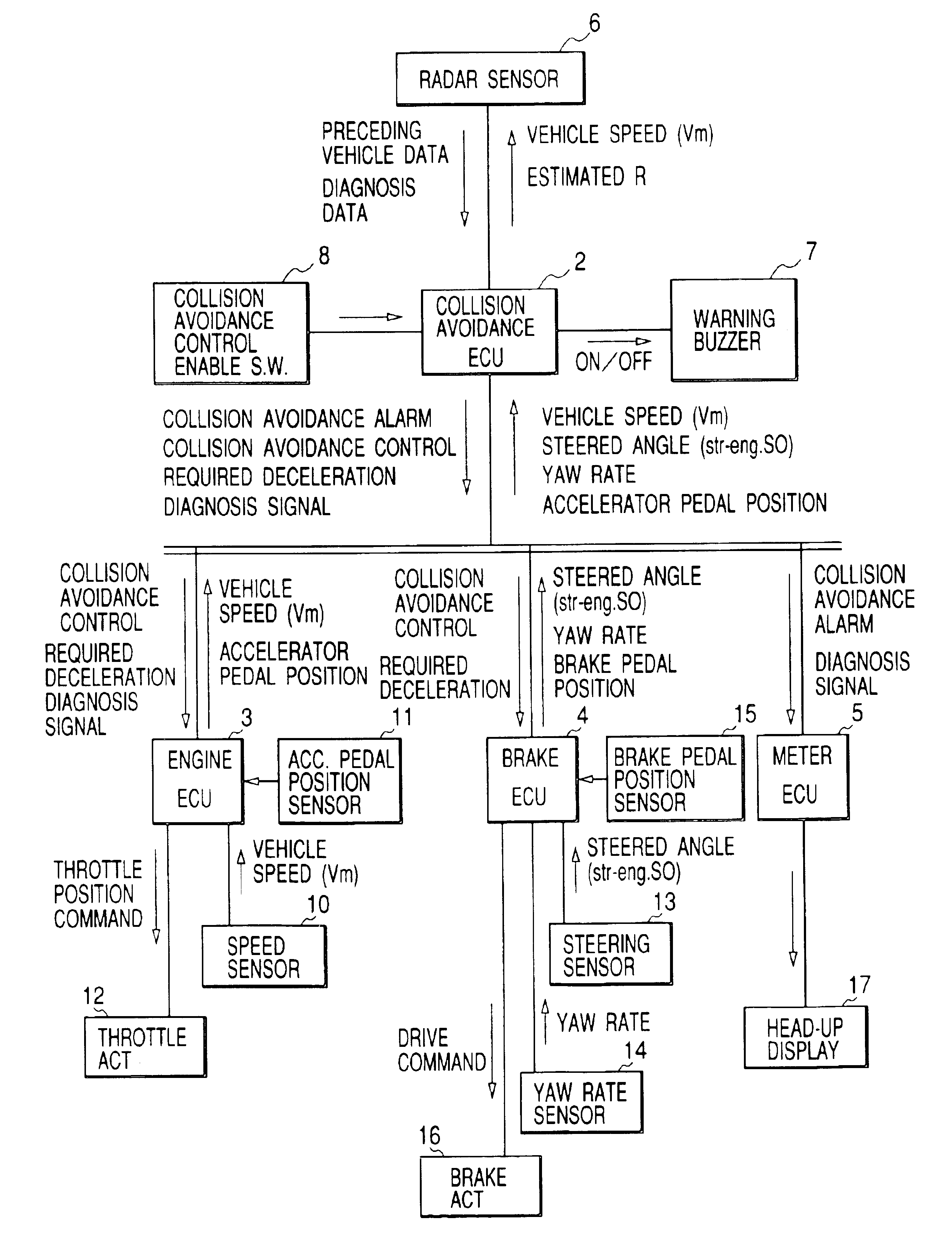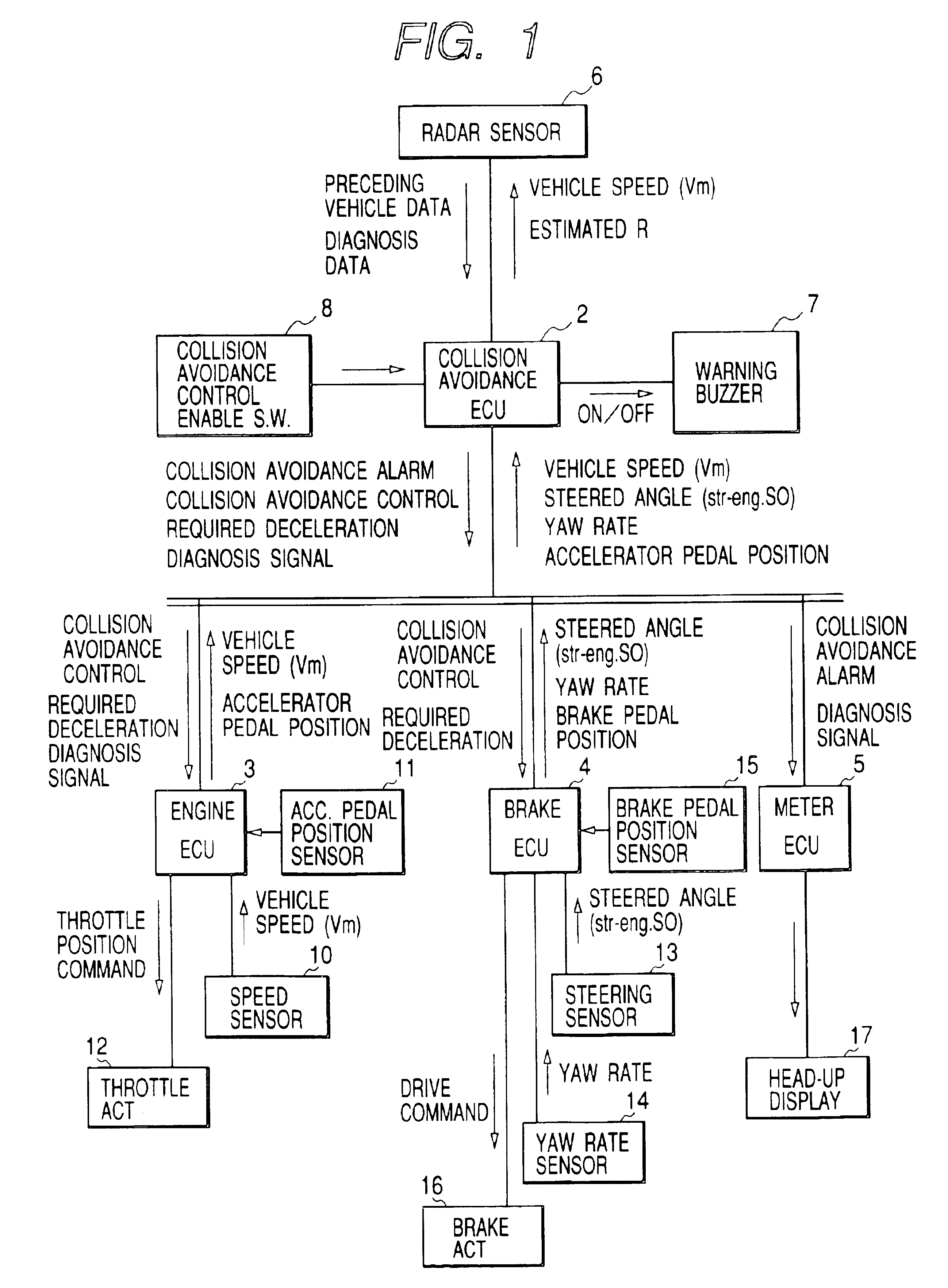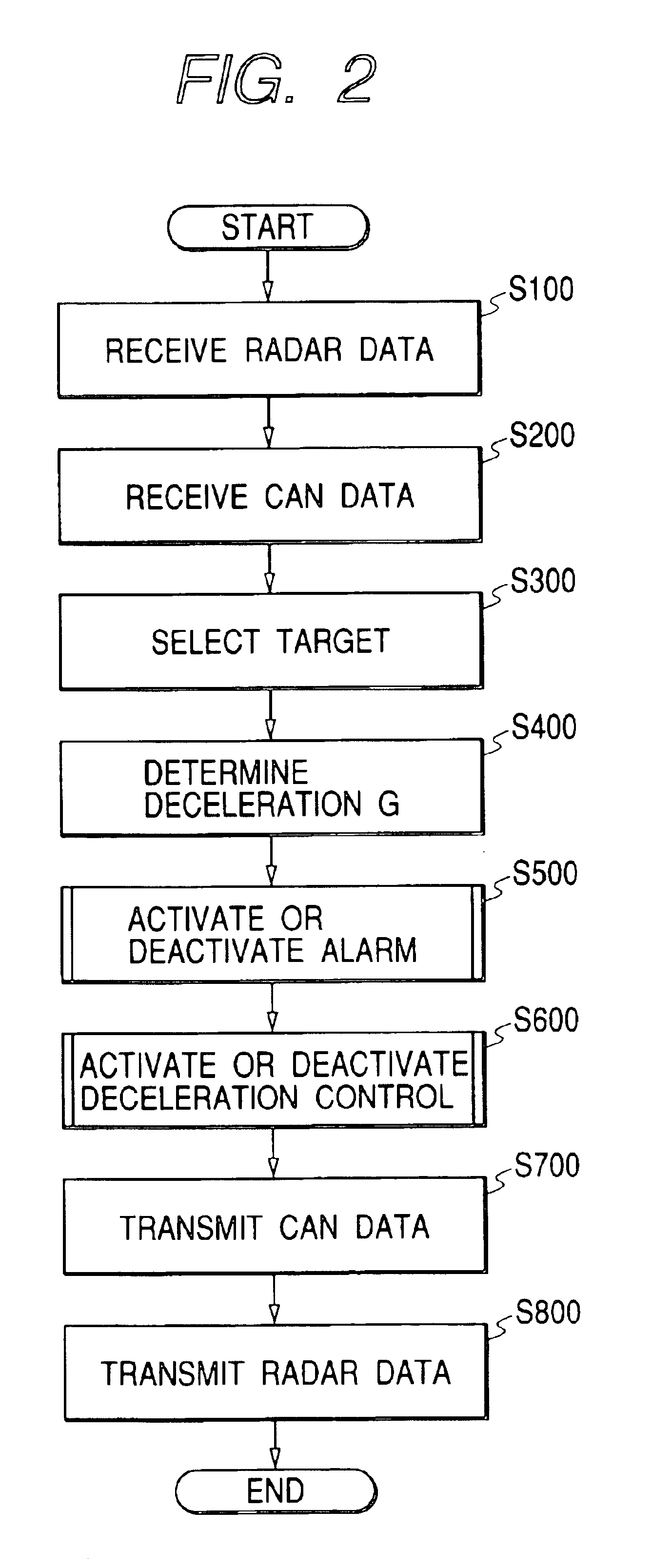Collision avoidance control system for vehicle
a control system and vehicle technology, applied in the direction of driver input parameters, external condition input parameters, electric devices, etc., can solve the problems of control lag, system operation load increase, and the inability of the above system to determine the degree of deceleration to be produced
- Summary
- Abstract
- Description
- Claims
- Application Information
AI Technical Summary
Benefits of technology
Problems solved by technology
Method used
Image
Examples
Embodiment Construction
[0031]Referring now to the drawings, wherein like reference numbers refer to like parts in several views, particularly to FIG. 1, there is shown a collision avoidance control system according to the invention which may be employed in automotive vehicles to avoid accidental collisions with obstacles such as preceding vehicles running ahead. The following discussion will refer to, as an example, use in automotive vehicles. The collision avoidance control system consists essentially of a collision avoidance electronic control unit 2 (will also be referred to as a collision avoidance ECU below), an engine electronic control unit (will also be referred to as an engine ECU below) 3, a brake electronic control unit 4 (will also be referred to as a brake ECU below), and a meter electronic control unit 5 (will also be referred to as a meter ECU below) which are coupled to each other through a LAN communications bus. Each of the ECUs 2, 3, 4, and 5 is implemented by a typical microcomputer eq...
PUM
 Login to View More
Login to View More Abstract
Description
Claims
Application Information
 Login to View More
Login to View More - R&D
- Intellectual Property
- Life Sciences
- Materials
- Tech Scout
- Unparalleled Data Quality
- Higher Quality Content
- 60% Fewer Hallucinations
Browse by: Latest US Patents, China's latest patents, Technical Efficacy Thesaurus, Application Domain, Technology Topic, Popular Technical Reports.
© 2025 PatSnap. All rights reserved.Legal|Privacy policy|Modern Slavery Act Transparency Statement|Sitemap|About US| Contact US: help@patsnap.com



